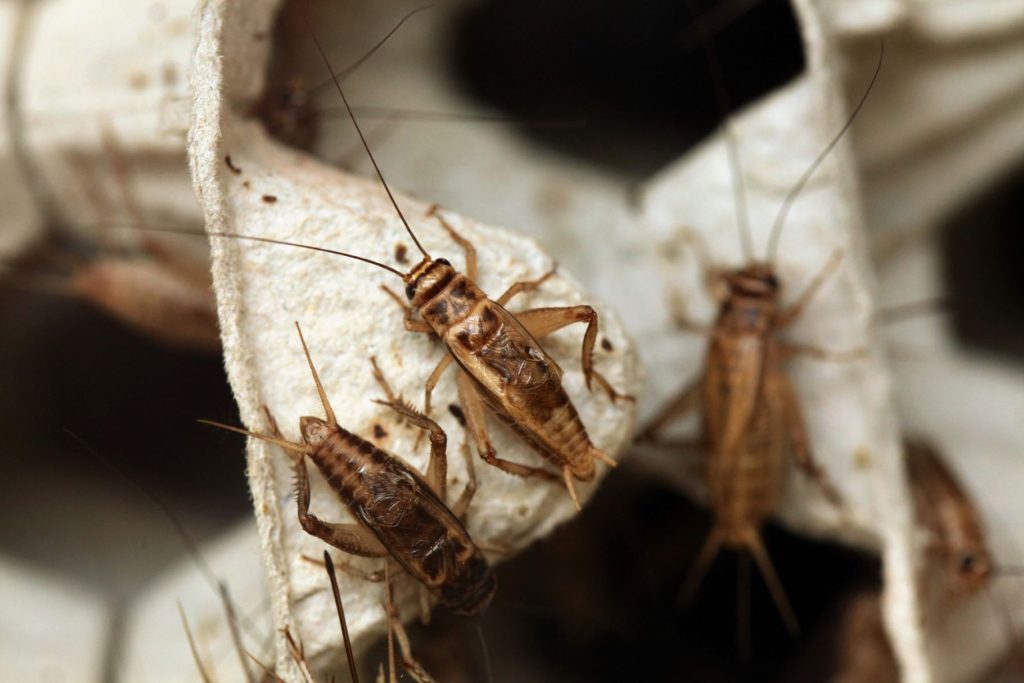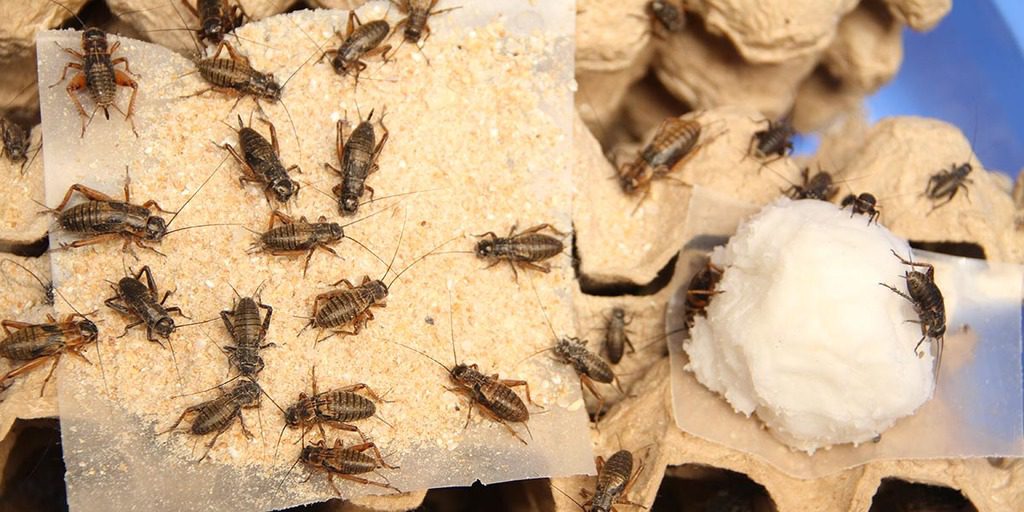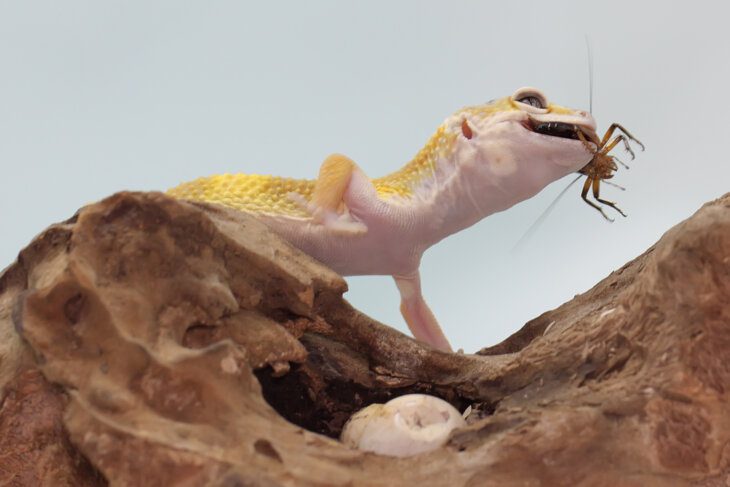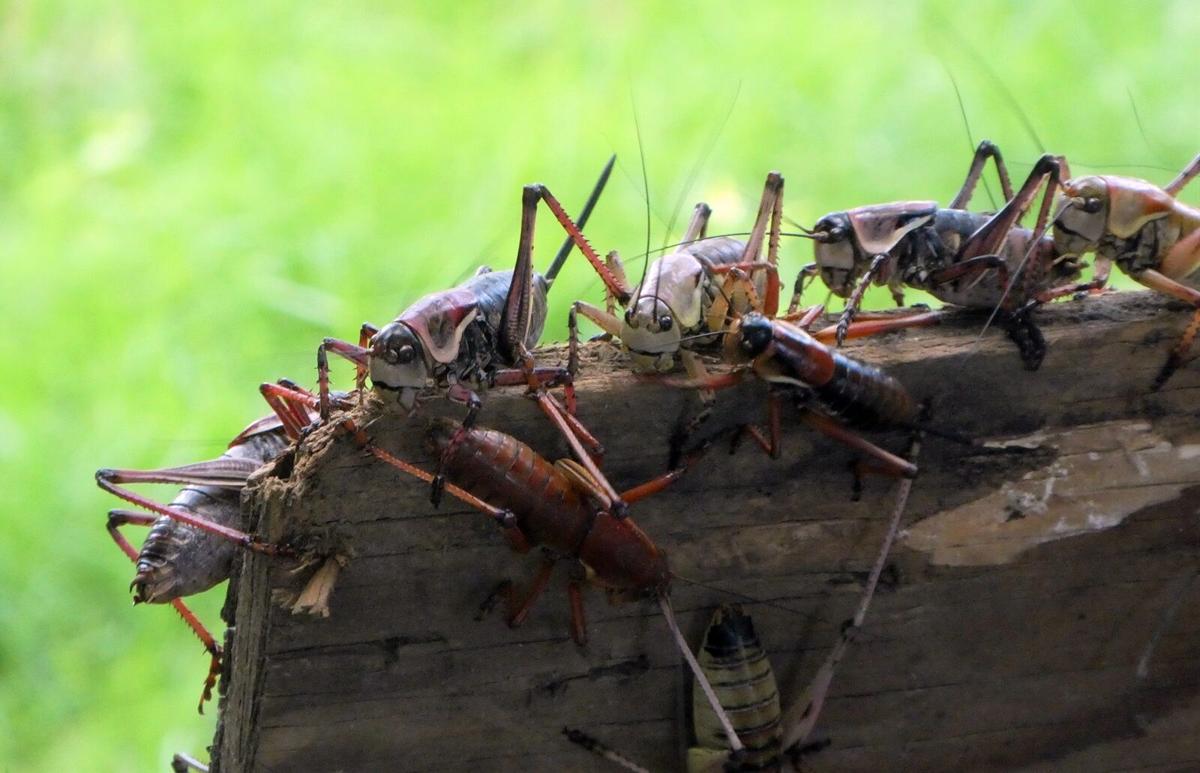
Crickets are a popular live food source for reptile pets like geckos, bearded dragons, snakes, and more. However, keeping crickets alive long enough to become reptile food requires special care and equipment. Providing proper housing, temperature, food, and water are essential to maintaining healthy crickets. With some basic knowledge of cricket care, you can easily keep these tiny jumpers alive for weeks to be used as nutritious feeders. This guide covers everything you need to know to successfully raise and maintain live crickets as reptile food.
Cricket Housing
The enclosure that houses your colony of feeder crickets needs to allow for proper air flow and include structures for the crickets to climb on. A 10-20 gallon tank or large plastic storage bin works well. The container should have a lid or screen cover to prevent escapes while still permitting ventilation. Add egg crates, cardboard, or commercially available cricket shelters to give the insects places to hide and climb. A substrate like coconut fiber, vermiculite, or paper can line the floor to help absorb waste. Just be sure to spot clean frequently to prevent odor buildup and ammonia toxicity.
Temperature Humidity

between 70-80°F. Higher than 85°F can cause death. Lower than 65°F slows growth and breeding. Maintain the ideal temperature range with an incandescent bulb or under tank heating pad (for plastic bins). The habitat should also have a cooler area so crickets can thermoregulate.
Moderate humidity around 40-60% is suitable. Too much moisture promotes bacterial and fungal growth. Place a shallow water dish in the enclosure and mist the habitat daily if needed to maintain humidity.
Food Water
Crickets are omnivores that need both plant and animal materials. Feed them high-quality gut loading diets to provide optimal nutrition for your reptiles.
There are two options for providing crickets with a gut loading diet: using commercial gut loads or making your own. Commercial gut loads are readily available at most pet stores and are specifically formulated to provide crickets with the necessary nutrients. However, if you prefer to make your own, you can use a combination of greens, fruits, vegetables, whole grains, and proteins such as fish flakes or cat food.
In addition to providing a nutritious diet, it’s crucial to ensure that crickets have access to clean water. Shallow dishes, wet sponges, or water crystals are all suitable options for providing water to crickets. It’s important to note that crickets may drown in deeper water dishes, so it’s best to use shallow dishes or sponges to prevent this from happening.
Health Maintenance
Spot clean waste and dead crickets daily. Deep clean the entire habitat weekly by replacing substrate and disinfecting any plastic furnishings. Observe the crickets daily for signs of illness like lethargy or dark spotting. Remove dead and dying individuals immediately to prevent disease spread. Cull any crickets that are deformed, injured, or much larger than the others.
Breeding Tips
- Provide a substrate for the female crickets to lay their eggs in. This can be anything that is moist and holds its shape, such as peat moss, coconut husk, or egg flats.
- Place the substrate in the habitat of the female crickets. The female crickets will lay their eggs in the substrate over a period of several days.
- After 1-2 weeks, move the egg-filled substrate to a separate nursery container. This will help to protect the eggs from being eaten by the adults or from drying out.
- Maintain the humidity in the nursery container at 80-90%. This can be done by misting the substrate with water regularly or by placing the container in a humid environment.
- Once the nymphs hatch, they will need extra humidity for the first week of their life. Continue to mist the substrate regularly or place the container in a humid environment.
- After the nymphs are 1⁄2” in size, they can be returned to the main cricket colony. The nymphs will continue to grow and mature at this point.
- Supplement with new young crickets often to maintain a thriving feeder population. Crickets are voracious eaters and will need to be fed regularly. You can supplement your cricket colony with new young crickets every few weeks to ensure that they have enough food to eat.
Here are some additional tips for caring for cricket eggs and nymphs:
- The temperature in the habitat or nursery container should be kept at around 80-90 degrees Fahrenheit.
- The substrate should be kept moist, but not soggy.
- The habitat or nursery container should be cleaned regularly to prevent the buildup of mold and bacteria.
- It is important to monitor the health of the crickets and nymphs regularly for signs of disease or parasites.
By following these steps, you can help to ensure that your cricket eggs and nymphs hatch and grow into healthy adults.
Ensuring Healthy Reptile Food
With the proper cricket care guidelined here, you can easily keep feeder crickets alive and nutritious for 4-6 weeks. Healthy crickets will glow with energy and activity. By meeting all their basic needs for housing, temperature, humidity, food, and water, your crickets will be a crawling bounty of healthy reptile food.
How to Keep Keep Crickets Alive for Reptile Food

Crickets are a convenient and nutritious live food source for many pet reptiles. However, keeping crickets alive long enough to provide multiple feedings for your reptile takes some planning and proper cricket care. Here are the key steps to maintaining live crickets for consistent reptile meals:
Provide Proper Housing
House crickets in a well-ventilated 10+ gallon tank or plastic tub. Add structures like egg flats for hiding and climbing. Use a substrate like paper, coconut fiber, or vermiculite. Make sure the habitat is escape proof.
Maintain Good Temperature Humidity
Keep the temperature between 70-80°F. Avoid extremes above 85°F or below 65°F. Use a heating pad or bulb if needed. Moderate humidity around 40-60% is ideal.
Give Access to Food Water
Feed crickets a high calcium, low phosphorus gut loading diet. Offer both fruits/veggies and proteins. Use shallow dishes for water to prevent drowning. Change food and water daily.
Perform Regular Maintenance
Spot clean daily and deep clean the full habitat weekly. Remove any dead or dying crickets immediately. Cull injured and deformed crickets. Observe the colony for signs of illness.
Allow for Breeding
Add egg flats or toilet paper tubes for females to deposit eggs into. Move these to a separate nursery container. Return young crickets at 1⁄2” size to the main colony. Supplement with new juveniles often.
Look for Signs of Health
Healthy feeder crickets will be active, energetic, and free of dark spots. Only feed your reptile crickets that appear healthy. Never offer reptiles dead or dying crickets.
By following this cricket care guide, you can successfully keep live crickets for 4-6 weeks or longer. Your reptile will benefit from having a readily available supply of healthy, gut loaded crickets to feed their carnivorous appetites.
Conclusion

- House crickets in a large, well-ventilated habitat with hiding places and climbing objects.
- Maintain proper temperature range between 70-80°F. Avoid extremes.
- Moderate humidity around 40-60% is ideal. Lower risk of mold growth.
- Provide fruits, vegetables, grains, and proteins daily. Use shallow dishes for water.
- Clean habitat and change food/water completely weekly. Remove dead crickets ASAP.
- Allow for breeding by adding egg laying sites and separating nymphs.
- Look for crickets that are active, jumping, feeding, and free of dark spots.
- Crickets kept under proper conditions can live 4-6 weeks and provide nutritious reptile food.
Keeping feeder crickets alive for your reptile takes some equipment and daily care, but is very feasible. Follow this guide for all the essential housing, food, temperature, humidity, and health practices. With the right setup and maintenance, you’ll have healthy gut loaded crickets hopping into your reptile’s mouth for weeks!



